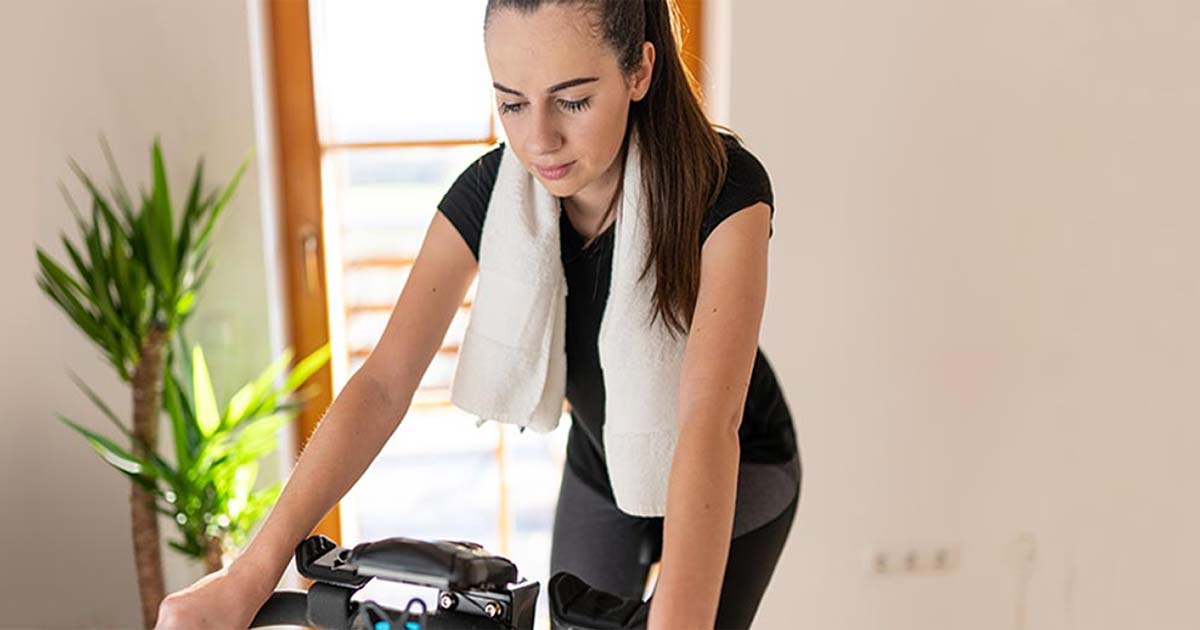Expert-Approved Tips for Staying on Track with Your Exercise Resolution
Advice to improve your movement, fitness, and overall health from the world's #1 in orthopedics.
It's not a new year without a resolution, is it? If yours is the same this year as it is every other year – to exercise more – and you always give up by February, make this the year that you stick with it. These tips from Ashley Fluger, CSCS, CPT, an exercise physiologist at the Tisch Sports Performance Center at HSS, can help set you up for success.

Define your goals clearly.
So you want to work out more. What does that really mean to you? Think specifically about what you want to accomplish and how that could impact your life. "Personalize your goal," suggests Fluger. "Instead of saying, 'I want to get stronger,' think about what will make you feel like you're stronger. Do you want to be able to lift 10-pound dumbbells? Go for a longer run before tiring? Do a certain number of push-ups? Be able to participate in a virtual group workout for 30 minutes?"
The more concrete, specific and actionable you can be about your goals, the better you'll be able to achieve them.
Make your goals attainable.
You might want to run a marathon, exercise for an hour every day or do a headstand. But if you're nowhere near doing those things, don't make them your immediate targets.
Instead, match your goals to where you are now, being realistic about your own body and level of fitness. "It's important to be aware of what you realistically can and can't do based on your physical ability and health and medical conditions," says Fluger. "Every type of exercise is not necessarily the best choice for everyone." No matter where you are on your fitness journey, schedule an assessment with a certified fitness professional to establish a baseline. "Having as much information as possible will be helpful in selecting appropriate exercises to start with, as well as safe progressions as you work toward your goals," says Fluger.
Enjoy yourself.
It might sound obvious, but "find something you enjoy doing," says Fluger. "You are definitely more likely to stick with something that you enjoy, rather than following the latest workout trend."
If you haven't exercised consistently before, make a list of activities you enjoy that also get your heart rate up. That could be going for a walk around the block, dancing in your basement to '80s music or taking a bike ride through the neighborhood. Put the list in a place you see often and pick something to do for 20 to 30 minutes at least five days a week. Do something different each day so that exercise will always seem fresh and exciting.
If you're an avid gym rat (who's now exercising in your home gym), instead of upping the quantity of your exercise, concentrate on the quality of your movement. "Take the time to focus on proper exercise technique," says Fluger. Or you can aim to try one new type of exercise each month. Check out a Zumba video or do some morning yoga. It may also be time to incorporate more rest into your routine. "Remember more is not always better," she adds. "You know your body best. Give it what it needs!"
Break it down.
A key to achieving big goals is to break them down into small, manageable steps you can take one at a time. For instance, if you want to run a 5K by the spring, make a plan to walk and run for 20 minutes five days for a week, walking for 5 minutes, running for 1 and continuing until you've done 20 minutes total. The next week, add another minute of running to each interval, then add more running until you're running the entire 20 minutes. Then just keep adding minutes onto your run.
"Doing this helps you stay organized, on target and more in control of your progress rather than being constantly overwhelmed," says Fluger.
Find a friend.
Accountability is key when it comes to staying with any program. "Surround yourself with people who will support you in your goals and don't be afraid to ask for a little extra encouragement when you need it," Fluger says.
Another benefit: When you share your own goals, you often motivate others to set goals as well. "This year has been stressful and for most of us, it didn't go as planned," she adds. "Now more than ever, we all need each other for support."
Track your progress.
There's nothing more motivating than seeing growth you can measure. Document your journey to help you stay organized and in control, says Fluger. If your goal is to lose 10 pounds, take your measurements and a picture of yourself when you begin, then photograph and measure yourself once a week. If your goal is to be more active, chart your after-dinner walks and hang it on the fridge.
Set small goals along the way and celebrate them when you reach them. Tracking your progress also helps you identify if you get stuck, so you can make any course corrections necessary. "Remember that every day counts and try not to be hard on yourself," says Fluger. Even if you miss a day, if you also have a long log of workouts, you'll see you're doing great. "Focus on the positive outcome of your long-term goal and all your successes along the way."
Published 12/30/2020





